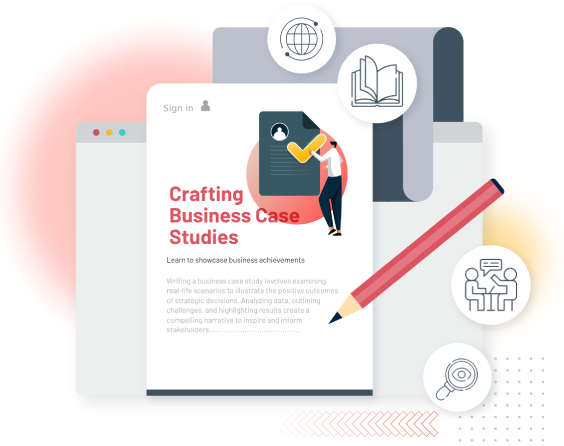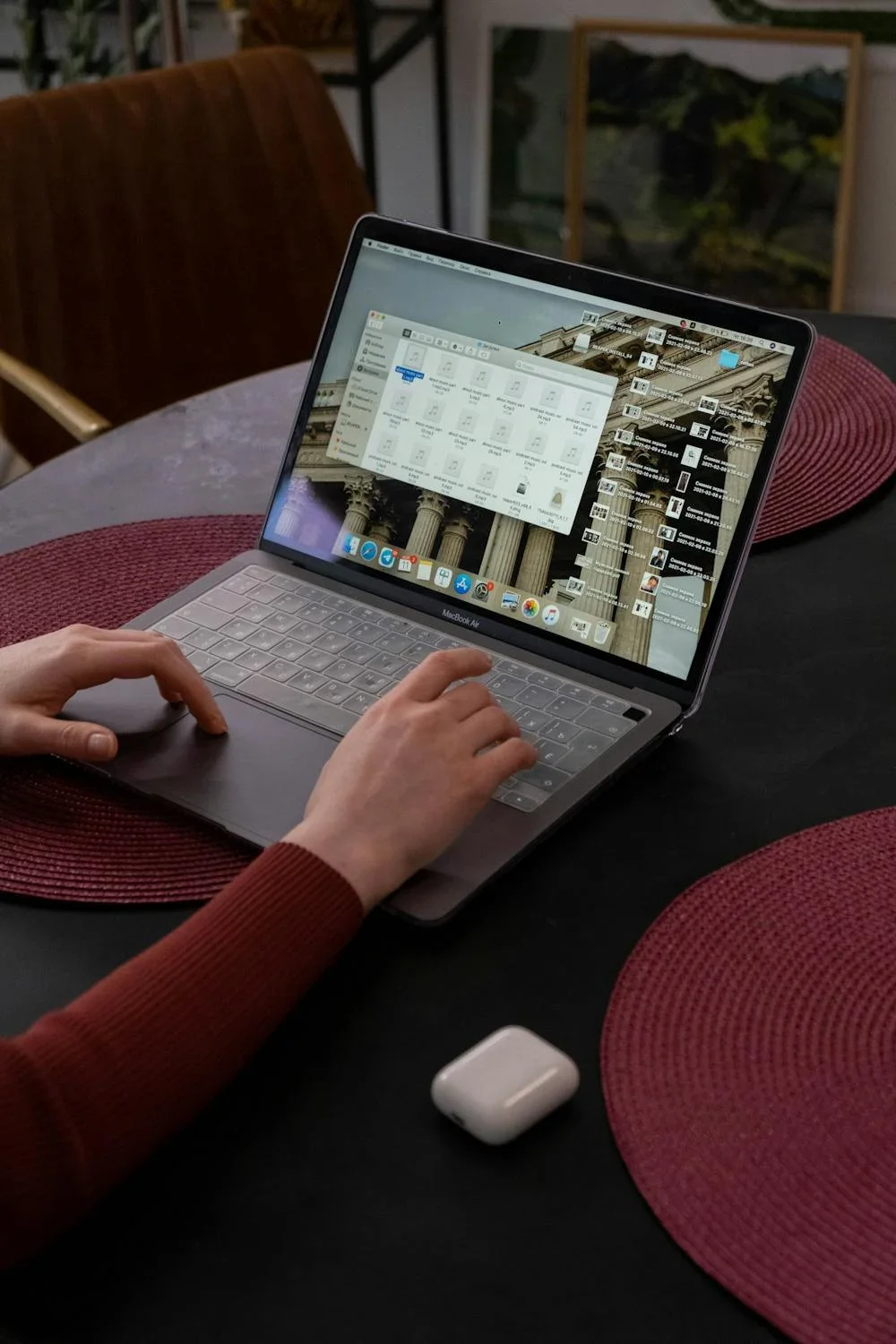
Examples of case studies are effective tools for disseminating knowledge, as well as a way to illustrate the proposed approaches and their usability in practice to the target audience in the business and academic context. A good case structure is helpful when insight is supposed to be given, arguments have to be made, and successes have to be sold. However, how appealing your case study turns out depends much on the style you choose to adopt. Below is a clear and comprehensive handout with a step-by-step analysis of the factors to consider when formatting a case study and methods to utilize to increase the case study’s effectiveness.
Formatting isn't just about aesthetics—it's fundamental to effective communication. A well-structured case study is appealing and a helpful tool for memorizing and comprehending the needed data. Format can also make a difference in how your data is received, whether you are presenting your work to professors, CEOs, or clients. Research from the Journal of Business Communication demonstrates that structured content improves information retention and recall, making it easier for readers to follow and understand complex topics.
Studies have shown that structured content improves comprehension and retention. According to the Journal of Business Communication, organized information helps readers grasp and retain complex topics more easily. Readers can better follow your arguments and draw the correct conclusions when your case study follows a logical and intuitive flow.
A well-formatted case study appears professional, lending credibility to your work. On the other hand, a poorly formatted document, regardless of its content, may detract from the credibility of the findings. Proper headings, font style, font size, and format enhance the work's appearance, reflecting both the author's and organization's attention to detail.

Proper structure is the backbone of an impactful case study. Here’s a thorough breakdown of each section you need to include:
For the reader's ease, the title page establishes the first appeal of the case study and provides additional information about the study. It should be as specific as possible to the situation you describe—no more, no less.
Title: A concise and descriptive title helps set expectations. It should be your case study's topic or at least the main focus. For example, “Transforming Customer Experience: A Case Study on XYZ Company.”
Subtitle (optional): Sometimes, it provides more detail or defines the area under consideration in the case study.
Authors & Date: Include the authors' names and the date of publication for proper attribution and context.
Organization Logo: Add your organization’s logo to enhance professional appearance and emphasize organizational branding.
The executive summary is a critical section for readers who need to quickly understand the essence of the case study without going into detail. It provides an overview of the objectives, key findings, and recommendations. Hinge Marketing statistics show that readers retain key messages best with summaries of around 200 words, capturing attention early.
Purpose: Clearly state why the case study was conducted. What issue or question does it address?
Key Findings: Emphasize the most substantial insights from the case study.
Conclusions: Summarize the actionable insights derived from the study.
Tip: Keep the executive summary short (one page or less). A concise summary not only respects the reader’s time but also improves understanding.
The introduction sets the stage for the reader by providing the necessary background information and context. It should grab the reader’s attention and introduce the key issues or problems.
Background Information: Explain the context of the study—why this particular case study was chosen and what it aims to resolve or explore.
Problem Statement: Define the problem that the case study addresses. This needs to be clearly articulated so the reader understands the core focus of your research.
Objectives: Clearly state the goals of the case study, guiding the reader through the findings and conclusions.
Example: “The objective of this case study is to assess how XYZ Company improved customer satisfaction and loyalty through strategic changes to its customer experience.”

Methodology: The methodology illustrates how the data was collected and analyzed. This is especially important to make your work more credible and to provide other people with insights into the outcome of your research.
Data Collection Methods: Were interviews, surveys, focus groups, or observations used? Be specific and explain your data collection process.
Sample Size: Include details about your sample size and characteristics, as these affect the reliability of your findings.
Data Analysis Techniques: Describe the techniques or software used to analyze the data (e.g., thematic analysis for qualitative data, statistical software for quantitative data).
Tip: The transparent approach promotes confidence and allows readers to assess the study's credibility.
Findings: This is the part of the report where the analysis of the information collected in the study is provided. It should also be significantly brief and straightforward so that even a nonspecialist in computation can understand what is being presented.
Quantitative Data: When presenting numerical data, always use charts, graphs, and tables. Graphics enable the audience to grasp and remember ideas easily most importantly.
Qualitative Data: Summarize the key themes or insights from interviews, open-ended responses, or observations. Contextualize these findings in relation to your research questions.
Contextual Analysis: This section will compare the identified study findings to the problem statement and then illustrate what this entails for your work in advancing the objectives of your study.
Example: "To visualize the impact of the new strategy, a bar chart can be used to show the rise in customer satisfaction scores over a period of six months."
Discussion: In the discussion section, interpret your findings and link them to the original objectives. This is where you demonstrate the significance of the data.
Link Findings to Objectives: Relate your findings to the objectives and explain what they reveal about the original problem.
Implications: Highlight the general implications of your findings in relation to the specific firm, the overall industry, or the specific stream of research.
Limitations: Address any limitations in your methodology or data that could affect the interpretation of the findings.
Tip: It is useful not only to get an idea of what is published there but also to reminisce, support, and elaborate on observations and point out several advantages and disadvantages of a particular case.
Beyond content: the design and layout of your case study play a crucial role in keeping readers engaged. Within a professional environment, it is often the case that information assimilation time is limited. Therefore, a clear and well-structured document dramatically increases the possibility of the reader studying your case study material.
Use White Space Effectively: White space, or negative space, is the empty space around text and images. It prevents an unpleasant view because the content looks cramped, disorganized, and messy; readers are not confused, and it is visually accessible. Overloading your pages with text or visuals can overwhelm the reader, so balance is key. Proper white space helps highlight important sections and ensures the reader's eyes can rest.
Using the appropriate fonts and font sizes ensures that your case study is easy to read and presented professionally. Use a clean, modern typeface for the body text, and reserve bold or distinctive fonts for headings and subheadings. Make sure your font size is readable, typically between 11 and 12 points for body text and larger for titles and headings.
When applicable: incorporating your organization’s branding into the color scheme can create a cohesive look. Use company colors in headings, charts, and graphics to make your case study visually aligned with your brand. However, keep colors minimal and ensure they don’t distract from the content.
Case studies aren’t just reports—they are a form of storytelling. A compelling narrative helps to guide readers through the content in a way that feels engaging rather than purely informational. Start by presenting a problem, guide the reader through the journey of discovery, and conclude with the resolution. This story-like structure makes your case study relatable and memorable, offering more than just data and facts.
Engage with Real-World Examples: Whenever possible, anchor your findings with real-world examples that resonate with your audience. Readers are likelier to connect with a case study grounded in practical, real-life experiences rather than abstract concepts.
Highlight the Human Element: Where appropriate, include quotes, testimonials, or interviews from individuals involved in the case study. This adds a personal touch to your narrative, allowing readers to see the direct impact of the findings on real people or organizations.
Finally, to ensure your case study maintains reader interest, consider the following strategies:
Interactive Elements: For digital case studies, include hyperlinks to additional resources, videos, or related studies. This keeps readers engaged and allows them to explore related content.
Summarize Key Points: At the end of major sections, include brief summaries or bullet points to reinforce key takeaways. This helps readers retain important information and offers a quick reference point.
Call to Action: For business-related case studies, conclude with a clear call to action, directing readers to the next steps, whether reaching out for more information, exploring further research, or implementing suggested strategies.
Conclusions: This section summarizes the key takeaways from your case study. It should recap the major findings and their implications.
Main Takeaways: Restate the most important insights from the study.
Recommendations: Offer clear, actionable recommendations based on the analysis of the data.
Future Research Directions: Suggest areas for further research or potential improvements in methodology.
Example: "XYZ Company should continue using data analytics to fine-tune its customer experience strategy, focusing on personalized communication to enhance customer satisfaction."
This section should list all the sources you cited in the case study. Follow a consistent citation style (e.g., APA, MLA, Chicago), and ensure accuracy in your references.
Cite all sources: Include all literature, data sources, and research materials referenced in the study.
Consistency: Ensure that the formatting of references is uniform.
Tip: Proper citation builds credibility and allows others to locate the sources you used.
If your study involves supplementary data or documentation, use appendices to house that information without cluttering the main text. Appendices are the place for:
Raw Data: Complete data sets, such as survey results.
Supporting Documents: Any documents that offer further insight or context, such as interview transcripts.

Use Visual Elements: Visuals help break up the text and simplify complex information.
Consider using: Charts and graphs for quantitative data.
Infographics to summarize complex ideas.
Maintain Consistency: Ensure the font, size, spacing, and alignment remain consistent throughout the case study. This enhances readability and professionalism.
Effective Use of Headings: Clear headings and subheadings help readers quickly navigate through the document and find the information they need.
Formatting a case study for maximum impact requires attention to structure, clarity, and presentation. By including key elements such as a title page, executive summary, introduction, methodology, findings, discussion, conclusions, references, and appendices, you ensure a complete and professional presentation. Implementing best practices like clear headings, visuals, and consistency will further enhance the reader’s experience. Ultimately, investing time in formatting can significantly boost your case study’s effectiveness in conveying your message.
For further assistance: consider booking a 30-minute free consultation with professional agencies, such as LexiConn , for expert guidance on elevating your case study’s quality and impact.



I have read and accept the Privacy Policy
Read More